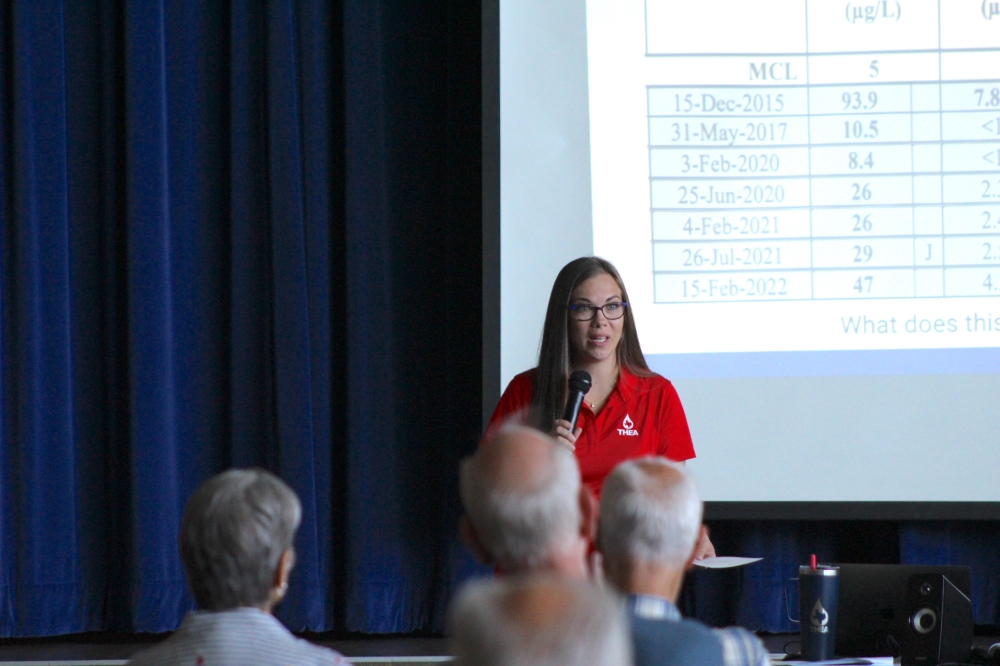Cleanup efforts at a shopping center at 11600 Jones Road, Houston, have been ongoing for about two decades after a business operating at the site contaminated the groundwater.
Advocates with the nonprofit Texas Health and Environment Alliance at a June 18 meeting called for the EPA to take more action to clean up the toxic waste site, claiming the process has moved too slowly.
“These sites are the more complex contamination sites. If there was an easier or faster way to address this contamination, we would do it that way. They wouldn't need to be put on the [National Priorities List]. So, unfortunately, it's just kind of the name of the game with NPL sites,” Jennah Durant, a representative from the EPA Region 6 Press Office, told Community Impact in a June 27 interview.
In case you missed it
Bell Dry Cleaners operated from 1988-2002, when officials discovered staff had illegally dumped dry cleaning solvents into the storm drain behind the property.
- The business shut down in 2002 after the Texas Commission on Environmental Quality detected contaminants in a public well supplying drinking water nearby and traced the issue back to the business.
- The site was listed on the National Priorities List in 2003, which gave the EPA the authority to clean it up.
- In 2006, Harris County established a boundary to prevent any new domestic wells from being drilled into the contaminated groundwater.
- In 2008, the first connections to a public waterline were made for 144 homes and businesses—about half of the total affected area.
- In addition to regular testing of the groundwater, soil and air around the site, cleanup efforts have included a soil vapor extraction system, which pulls vapors from the subsurface, as well as in-situ bioremediation, which entails drilling wells and injecting a substance that helps naturally break down the contaminants in the source area.
- A five-year review released by the EPA in September 2022 concluded the chosen remedy was “not protective” because many residents to the west in Edgewood Estates and Evergreen Woods continue to use private wells and therefore could still be exposed to contaminated groundwater.
- The site’s community involvement plan was updated earlier this year with the latest community outreach efforts.

Lauren Guidry-Leach became the remedial project manager for the Jones Road site in November. She said getting residents in the affected neighborhoods to sign up for public water access is a significant obstacle as just over 50% are connected to the public water line.
The White Oak Bend Municipal Utility District supplies water to those who have agreed to plug their private water wells. Officials said this is the most effective way to ensure protection from exposure.
However, the shopping center is safe to patronize because it has relied on public water since 2008, according to the EPA. The retail site is home to about 12 businesses.
“Our goal is not to shut down shopping centers or any businesses but to make it such that it’s protective of the people that work there or visit there. And the release occurred decades ago, so it got a big jump on us, so we're targeting the contaminants,” Superfund Remedial Supervisor Chris Villarreal said. “If it required an immediate action system [and] we had to relocate somebody, we can do that under Superfund, but that's not the general approach that we take.”
What’s next
Guidry-Leach said her team continues to work on connecting additional homeowners to the public water supply.
Additionally, a remedial investigation and feasibility study could also begin in 2025 to help the team determine the most efficient next steps. Guidry-Leach said this study could include:
- Defining the extent of the contamination
- Re-evaluating the original cleanup plan
- Monitoring well installation
- Semiannual sampling
- Door-to-door outreach in the affected neighborhoods
“[Guidry-Leach] mentioned that there's the remedial investigation study and then the feasibility study, and these processes can take years—five-plus years,” Medcalf said. “Right now, someone could be bathing their child in these chemicals. ... Right now, the community needs resolution whether everyone knows it or not.”





